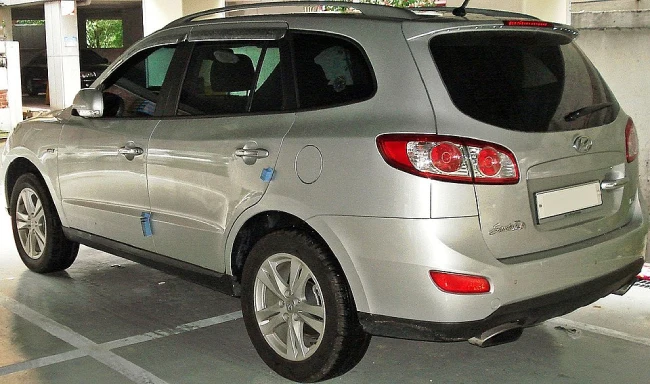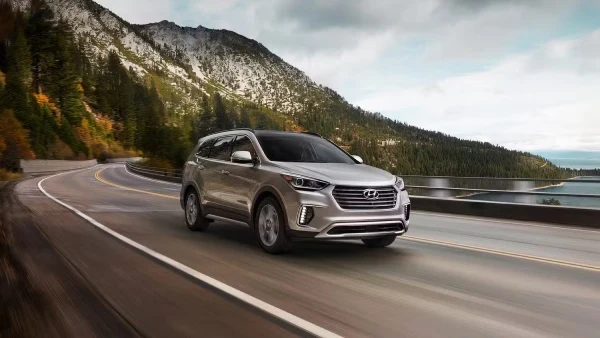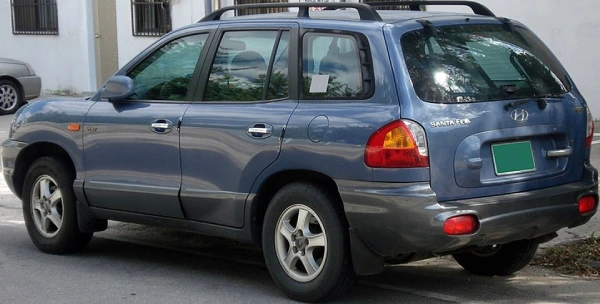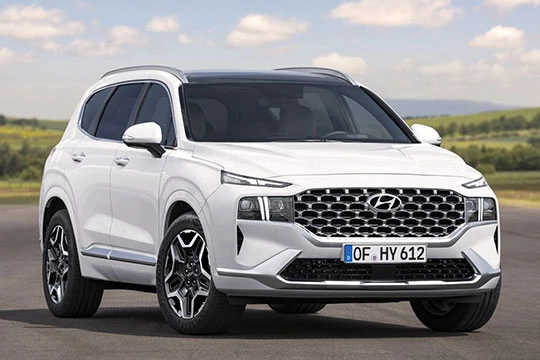Table of Contents
- the Hyundai Santa Fe generations
- Second Generation: 2007 – 2012
- Third Generation: 2013 – 2018
- First Generation: 2001–2006
- Fourth Generation: 2019–2023
Hyundai is not new to creating premium, reasonably priced, efficient, and shockingly fashionable family SUVs—typically within the range most Americans can purchase without going broke. One such vehicle is the Santa Fe; thanks to Hyundai keeping the model in continuous production for 25 years, there is a great range of used examples on sale at any one moment for people with tighter budgets.
How safe, though, is purchasing an old Santa Fe? More significantly, are there model years and generations you should be avoiding? What should you be searching for? We searched among mountains of dependability to learn.
the Hyundai Santa Fe generations
| Generation | Model Years | Engines | Transmissions | Drivetrains |
|---|---|---|---|---|
| 1st Gen | 2001 – 2006 | 2.4L I4, 2.7L V6, 3.5L V6 | 5-speed manual, 4-speed automatic | Front- or all-wheel-drive |
| 2nd Gen | 2007 – 2012 | 2.4L I4, 2.7L V6, 3.3L V6 | 5-speed manual, 4-, 5- and 6-speed automatic | Front- or all-wheel-drive |
| 3rd Gen | 2013 – 2018 | 2.4L I4, 2.0L I4 turbo, 3.3L V6 | 6-speed automatic | Front- or all-wheel-drive |
| 4th Gen | 2019 – 2023 | 2.4L I4, 2.0L turbo I4, 2.5L I4, 2.5L turbo I4, 1.6L turbo I4 hybrid, 1.6L turbo I4 PHEV | 6- & 8-speed automatic | Front- or all-wheel-drive |
| 5th Gen | 2024 – present | 2.5L turbo I4, 1.6L turbo I4 hybrid | 6- & 8-speed automatic | Front- or all-wheel-drive |
Second Generation: 2007 – 2012

2007–2012 The second-generation Hyundai Santa Fe marked a significant advancement for the model in terms of appearance, standard equipment, and refinement. Launched, the 2007 model year appeared new and clearly more premium than the previous model, which surely enabled it to perform on showroom flooring. But problems lurked beneath, and some are severe enough for us to mark this as the least dependable of all Hyundai Santa Fe versions.
2008 model year Hyundai fans Quality & Reliability Rating: 87/100
Many owners have reported problems with leaking gaskets and defective fuel gauges, which are obviously annoying problems any owner would gladly go without.
More worrisome, though, is the volume of complaints about total engine failure; thirty 2012-model owners have reported such a problem with Car Complaints. The usual stated repair cost is just north of $5,000, which is sufficient justification for us to classify this decade as the least dependable generation.
Although the 2008 model year performed quite well, Hyundai fans rated most second-generation Hyundai Santa Fe model years under 80 out of 100 for quality and dependability. Most Santa Fe models that followed did better, which once more suggests underlying dependability issues even in a brand-new vehicle.
Third Generation: 2013 – 2018

2013–2018 Fe dependability did, as is to be expected, improve when the model was redesigned from the second to the third generation. advanced infotainment systems, more efficient powertrains, and a clearly more luxurious look, the luxury also improved in other respects. However, the Santa Fe generation continued to face widespread flaws.
Common Problems
- Engine malfunction
- Reluctancy in Reluctance
The 2016 model year Hyundai fan’s Quality & Reliability Rating is 85/100.
Like the previous 2012 model year, early cars obviously still suffered from engine failure, much to the dismay of owners, as would have been shown. Out of 130 complaints on Car Complaints recorded against the 2013 model year Santa Fe, 16 directly relate to engine failure; the average repair cost is $3,700. By the end of the third-generation run, engine-failing problems decreased (though they did not completely disappear), while transmission issues increased. The primary complaints include poor shifting, particularly under cruise control, and difficulty changing and locating gears.
First Generation: 2001–2006

Like many older vehicles, the simplicity of this first-generation Hyundai Santa Fe means it performs really well when compared to subsequent, more complex Santa Fe variants. Thus, although various problems do plague this model, potential owners should take comfort in the fact that, if maintained properly, the powertrains are usually rather solid.
Usually occurring problems
Rusting undercarriage and frames
The paint is running off the Hyundai fans, and the quality and reliability are rated as N/A.
With the first-generation Santa Fe, rust is the true killer. The NHTSA notes many complaints from owners of rusted-through flooring, rusted engine cradles, and just generally badly corroded early Santa Fe models. Strangely, many owners have also mentioned that the paint on these early vehicles fades; the only fix is to have the car painted again. Not only would thin-wearing paint make it simpler for panels to rust, but painting a car is an expensive job to do, which is a concern for potential buyers.
Fourth Generation: 2019–2023

With exemptions for the new and current fifth-generation models, the previous fourth-generation model is the most reliable Santa Fe generation. Not only is it the most trustworthy iteration, but it’s also the most flexible, most efficient, and most advanced—so everyone in the market for just such a two-row SUV should aim to purchase one, if it fits their budget.
- Typical problems
- Fire risk from a tow-hitch harness
- Forward Collision Avoidance: Error
Hyundai fan quality and reliability rating: 86/100 (2020 model year)
It’s encouraging to see that the fourth generation of Santa Fe vehicles brought a whole fresh range of inline-four engines because previous incarnations suffered from costly engine problems. Other minor issues do affect this generation; for example, a recall that specifies how the tow hitch harness could fail and start a fire would be prudent for any purchasers or present owners to check.
Additionally noteworthy are 11 complaints registered with the NHTSA over the Forward Collision Avoidance System of the 2019 Hyundai Santa Fe. Owners claim the system makes the car stall, and it won’t restart for a few minutes. Though they’re less severe than the problems past Santa Fe models experienced, these irritations nonetheless bother me.
None of the Santa Fe generations found themselves as exceptions to Hyundai’s consistent great-value family car philosophy. From the earliest to the very current model, every Santa Fe generation performs on the basis of being a very useful and efficient family SUV. But in terms of Santa Fe dependability, early and later generations differ greatly.
If your budget would only cover an earlier model, you might be better off acquiring a first-generation model; just make sure to get one that has been rust-proofed, kept clean, and garaged. For most, though, the response will be to shell out and grab a fourth-generation device, which, by some margin, looks to be the most durable and dependable incarnation.
Leave a Reply